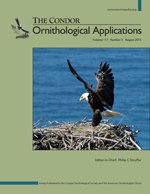Wetland stopover use by migratory shorebirds is concurrently influenced by habitat characteristics within a stopover site and characteristics related to the broader context surrounding the stopover site. To conserve wetland habitats essential for shorebird migration through the interior of North America, we need to understand how these dual scales influence stopover use. We surveyed >14,000 wetlands within 10 broad-scale landscapes in north-central Oklahoma from 2007 through 2009 to determine how characteristics within (intra) and surrounding (context) wetlands influence the density and species richness of migrating shorebirds at stopover sites. We used zero-inflated modeling and an information theoretic framework to separately examine and then compare the relative importance of intra-habitat variables and habitat context variables in explaining use of stopovers. We observed 38,288 migratory shorebirds of 29 species. Shorebirds were least likely to occur in isolated, small, steep-sided wetland habitats. Among intra-patch variables, shorebird density and richness were best explained by wetland habitat area, slope, and the cover and height of vegetation within a wetland. Shorebird density and richness were more than 2 times higher in large wetland habitats (i.e. >3.3 ha), and both decreased with increased vegetation and slope. The density of wetlands within 1.5 km of a stopover site had the greatest impact on shorebird density and richness among patch context variables. As habitat density increased from 0.07 to 1, shorebird abundance and richness increased by >200%. Shorebirds were positively related to grazing pressure but negatively related to forest/shrubland, urban/suburban development, and grassland land cover contexts. When compared to models with intra-habitat variables, models containing habitat context variables better explained migratory shorebird density and richness. We conclude that characteristics related to the broader context surrounding a wetland stopover sites strongly influence stopover use by migratory shorebirds. Conservation and management of shorebirds migrating through the continental interior should aim to provide large expanses of sparsely vegetated and shallow habitats within stopover sites and focus on open landscapes that contain high densities of stopover habitats.
How to translate text using browser tools
10 June 2015
Characteristics within and around stopover wetlands used by migratory shorebirds: Is the neighborhood important?
Gene Albanese,
Craig A. Davis
ACCESS THE FULL ARTICLE

The Condor
Vol. 117 • No. 3
August 2015
Vol. 117 • No. 3
August 2015
habitat use
landscape context
migration
prairie wetlands
shorebird
southern Great Plains
zero-inflated models




